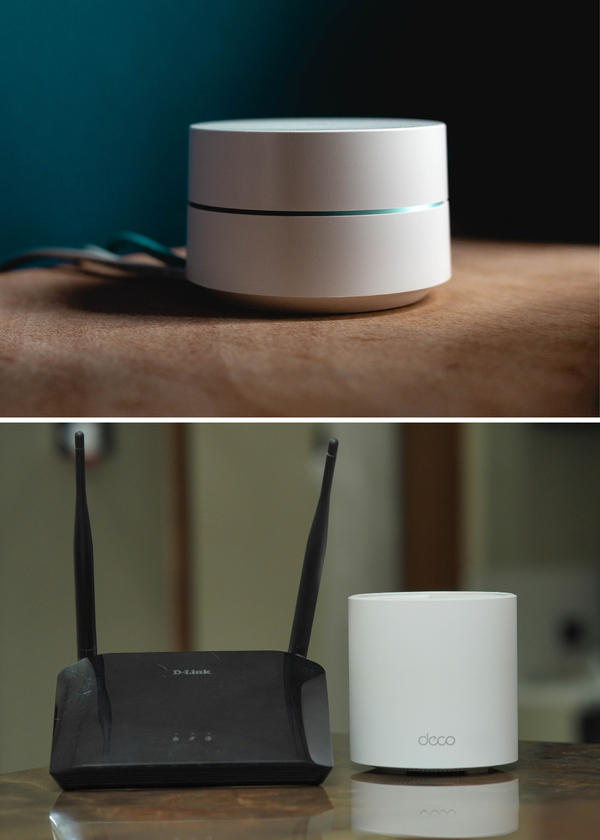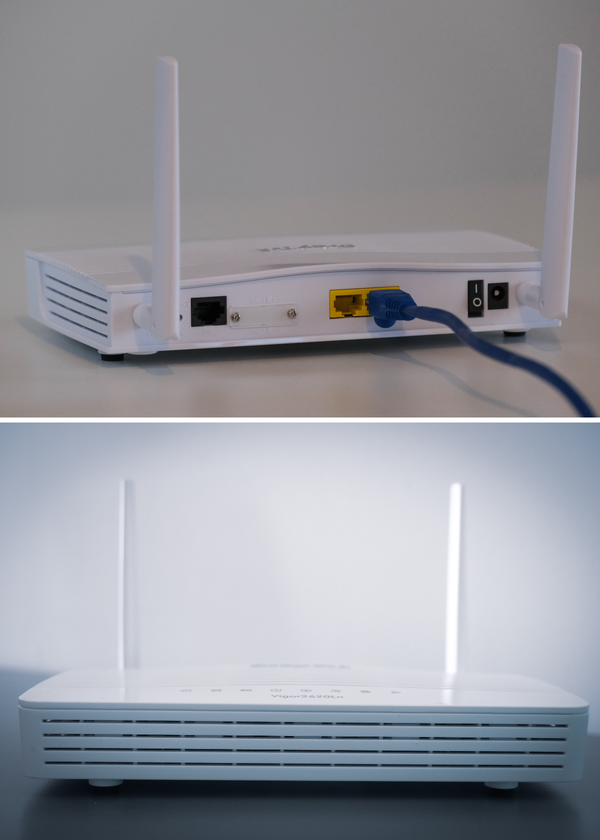The advent of 5G technology has ushered in a new era of high-speed internet and wireless communication, promising faster speeds and more reliable connections. But as 5G home routers become increasingly common, questions about their safety have surfaced. Are these devices a cause for concern, or is the anxiety surrounding them unfounded? In this comprehensive article, we'll explore the safety of 5G home routers, examining the science behind the technology and what experts have to say.
Understanding 5G Technology and Safety Standards
5G, or fifth generation, is the latest wireless communication technology, designed to operate at higher frequencies and provide faster data transfer rates. Unlike previous technologies, 5G can use two frequencies: the low band, which is similar to 4G, and the millimeter wave, which operates at a higher frequency. These advancements have led to concerns about increased exposure to RF radiation and potential health risks.
To address these concerns, 5G routers, like all wireless communication devices, must comply with safety guidelines set by international regulatory bodies. The World Health Organization and other health authorities have established limits on the levels of electromagnetic radiation that devices can emit. These guidelines are based on extensive research and are intended to protect human health.
The Science of RF Radiation and Human Health
RF radiation, a type of non-ionizing radiation, is emitted by wireless routers, cell phones, and other devices. Unlike ionizing radiation, such as X-rays, non-ionizing radiation does not have enough energy to remove tightly bound electrons from atoms or molecules and is not known to damage DNA or cause cancer.
Scientists have conducted numerous studies to determine if RF radiation from wireless devices can harm health. While some research has suggested a possible link to health problems, these studies often have limitations or are inconclusive. The majority of scientific evidence indicates that the RF radiation levels emitted by 5G home routers are well below the thresholds that could pose health risks.
Debunking Myths: 5G Routers and Health Risks
Myths and misinformation can scare people into believing that 5G technology is dangerous. For example, some claim that 5G routers can cause cancer or DNA damage. However, these claims lack scientific backing. The type of RF radiation emitted by 5G routers does not have the same properties as ionizing radiation, which is known to cause such health issues.
Another common myth is that the higher frequency of 5G signals can lead to more severe health problems. However, the energy of RF radiation decreases as the frequency increases, meaning that 5G's higher frequency signals actually carry less energy and are less likely to penetrate the body deeply.
Real-World Exposure: How 5G Routers Operate in Your House
In a typical home setting, 5G routers function to provide internet access to various devices. The routers emit RF radiation to establish a wireless connection, but the levels of exposure are generally low. Factors such as distance from the router, physical barriers, and router design all influence the amount of RF radiation to which individuals are exposed.
Moreover, 5G routers are designed to control the signal strength based on the demand for data. This means that the router will not always operate at maximum capacity, further reducing the potential for exposure. Additionally, the signal is often diffused over a wide area, which diminishes the intensity of RF radiation that any one person receives.
The Evolution of Wi-Fi Routers: From 1G to 5G
The journey from the first generation of cellular technology to the latest 5G home routers has been nothing short of revolutionary. Initially, the primary purpose of a cell phone was to make calls on the go, but as technology advanced, the demand for faster data transfer led to the evolution of cellular networks. With each generation, from 2G to 3G and then to 4G, the focus shifted towards increasing the bandwidth and improving the internet connectivity for mobile devices and computers. Now, 5G routers are set to redefine how we connect to the internet, promising speeds that rival traditional wired connections.
As customers eagerly await the widespread rollout of 5G service, companies like T-Mobile are at the forefront, ensuring that the transition is seamless. The 5G network operates at higher frequencies, typically in the GHz range, which allows for faster data transmission and the ability to handle more connected devices simultaneously. This leap in technology means that your Wi-Fi router is not just a tool for connecting to the internet; it's a gateway to a new era of digital communication, where the answer to 'are 5G home routers safe?' becomes increasingly relevant.
Addressing Health Concerns: Non-Ionizing Radiation and 5G
When discussing the safety of 5G home routers, it's crucial to understand the type of radiation they emit. Unlike X-rays and other forms of ionizing radiation that have enough energy to remove tightly bound electrons from atoms, causing damage to cells, 5G routers emit non-ionizing radiation. This type of radiation is low-energy and is not known to cause damage to the DNA within cells. The heat generated by 5G routers is also minimal and not a cause for worry, as it is significantly lower than the heat produced by sunlight, for instance.
However, the term 'radiation' often conjures images of hazardous exposure, leading some to don tin foil hats, both metaphorically and literally. To measure and ensure public safety, regulatory bodies set exposure limits based on extensive research. While the debate continues, with some still questioning 'are 5G home routers safe?', the consensus among health organizations is that the levels of non-ionizing radiation produced by Wi-Fi routers, including the new 5G ones, are well within safe limits for the general public, including children and pregnant women.
Comparing 5G to Previous Generations of Cellular Technology
When comparing 5G to previous generations of cellular technology, it's important to note that while 5G operates at a higher frequency, it still falls within the non-ionizing radiation spectrum. Previous generations like 3G and 4G also used radio frequencies to transmit data, and decades of research have not established a causal link between these technologies and health problems.
The main difference with 5G is its ability to use millimeter wave technology for faster speeds. However, this does not inherently make 5G more dangerous. The safety standards that apply to 3G and 4G also apply to 5G, ensuring that all generations of cellular technology adhere to the same health and safety guidelines.
The Role of Regulatory Bodies in Ensuring Safety
Regulatory bodies around the world, including the Federal Communications Commission (FCC) in the United States and the International Commission on Non-Ionizing Radiation Protection (ICNIRP), play a crucial role in ensuring the safety of wireless technology. These organizations review scientific research and set guidelines for RF radiation exposure.
These guidelines are periodically updated to reflect the latest scientific understanding. For instance, the ICNIRP released new guidelines in 2020 that take into account the characteristics of 5G technology. Compliance with these guidelines is mandatory for companies like Verizon and T-Mobile, which provide 5G services and equipment.
Perspectives from Health Organizations on 5G Safety
Health organizations, including the World Health Organization, have weighed in on the safety of 5G. The consensus is that, based on current evidence, 5G technology does not pose a significant health risk. These organizations emphasize the importance of adhering to established safety standards and continuing research to monitor the long-term effects of 5G exposure.
It's also worth noting that health organizations take a precautionary approach, meaning that they recommend minimizing unnecessary exposure to RF radiation when possible. This perspective ensures that even without definitive proof of harm, measures are in place to protect public health.
Practical Measures to Minimize Exposure
For those who are still concerned about exposure to RF radiation from 5G routers, there are practical steps that can be taken to reduce exposure. Simple actions like placing routers away from living spaces, using wired connections when possible, and turning off routers when not in use can all help to minimize RF radiation exposure.
Additionally, some people choose to use protective cases or shields for their devices, although the effectiveness of these products can vary. It's important to research and select products that have been scientifically tested and proven to reduce RF radiation.
Ongoing Research and Future Developments
As 5G technology continues to evolve, ongoing research is essential to ensure its safety. Scientists are actively studying the potential health effects of 5G exposure, and new findings will inform future safety standards and guidelines.
The rapid development of 5G also means that technology companies are constantly working on innovations to improve safety and efficiency. These advancements may lead to new ways of reducing RF radiation exposure while still enjoying the benefits of 5G connectivity.
FAQs
Q: Can 5G home routers cause cancer?
A: There is no conclusive scientific evidence that the RF radiation emitted by 5G home routers can cause cancer. The type of radiation used by 5G is non-ionizing and does not have the same damaging effects as ionizing radiation, which is known to cause cancer.
Q: Are there any health risks associated with 5G technology?
A: While some concerns have been raised about potential health risks, the majority of scientific research has not found a link between 5G technology and health problems at the levels of RF radiation emitted by home routers. Regulatory bodies continue to monitor the safety of 5G as the technology develops.
Q: What can I do to reduce my exposure to RF radiation from my 5G router?
A: To reduce exposure, you can place your router away from areas where you spend a lot of time, use wired connections instead of wireless when possible, and turn off the router when it's not in use. Additionally, you can research protective products that have been scientifically tested to shield against RF radiation.
Summary
In conclusion, 5G home routers are designed to be safe and comply with international safety standards.
The majority of scientific research does not support the notion that the RF radiation emitted by these routers poses a significant health risk. However, it's important to continue monitoring and researching the long-term effects of 5G technology to ensure public safety. For those concerned about exposure, practical measures can be taken to reduce RF radiation in the home.








